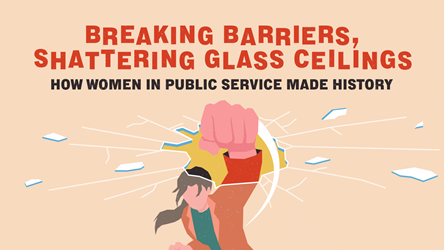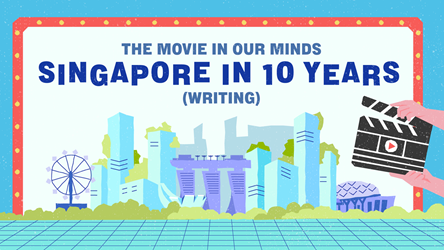Innovation Is No Solo Act

Smells like team spirit
Innovation is often pictured as one big idea culminating in a revolutionary device. But veterans like the PUB’s Mr Lee Kah Seng explain that innovation can also come in the form of continuous improvement, which creates value by saving time, effort and money in the long run.
Mr Lee is Chief Engineer of the Changi Water Reclamation Plant. Keeping the plant running smoothly is the raison d’être of his team, composed of engineers and technical officers. But their defining characteristic is being persistent in making things better.
In the course of their duties, Mr Lee and his team observed that despite following operating instructions closely, the recovery of solid waste from the plant’s centrifuges was below expected levels, even with the use of huge amounts of chemicals.
Setting out in 2011 to meet targets for the recovery of solid waste and reduce the amount of chemicals used, his team began a journey that would take them three years of hard work to optimise the treatment process, tweak the equipment and fine-tune the machineries’ maintenance regime.
The Changi Water Reclamation Plant processes half of all used water in Singapore. This means each successful improvement will have a large impact, though any failure would be likewise magnified.

To manage the risks, the team investigated the problem closely and brainstormed for ideas, working out theoretical outcomes on paper before pilot-testing each adjustment on a single centrifuge. Once an adjustment is proven to be successful, it is then implemented throughout the plant.
The PUB estimates that $2 million have been saved annually from the slew of tweaks and improvements to optimise the use of chemicals. Over the years, such successes have spurred the team to keep innovating. Mr Lee’s team has now moved on to investigate how to reduce the overall sludge quantity, and improving the performance of the sludge dryers.
“We have team spirit, and the camaraderie among us drives us to support and urge one another to do better in our work,” says Mr Lee. “We frequently encourage [the quieter members] by giving them opportunities to talk and protecting their ideas from being quickly shot down by the more vocal ones.”
He also attributes the culture of innovation to the PUB’s leadership. Organisational Excellence initiatives like the PUB’s 10K/Think YES! Ideas and Value Creation Day, which recognises innovation champions, create a virtuous cycle of continuous improvement.
“Our management has a firm grounding in engineering and can appreciate the benefits of our innovations. They also recognise the risks involved and hence their support is critical in getting our improvements off the ground,” Mr Lee adds.

Unlocking innovation in daily life
Dr Phua Chee Teck is on a mission to inculcate a passion for innovation in the young. An avid inventor, the manager and lecturer at Nanyang Polytechnic has led student teams, along with industry players, to develop bio-sensor systems and methods to determine the risk of stroke.
“Innovation is a great way to engage young people in their education and give them ways to overcome challenges in their daily lives… [It] is what keeps me alive,” says Dr Phua, who has five patents in biomedical technology.
One of his students, who often forgot if she had locked her door, paired up with a classmate in a final-year project to find an easy way to check whether a door is locked. Studying for a diploma in Electronics, Computers and Communication Engineering, they initially thought of creating a “hightech” solution involving circuits, batteries and even mobile phones.
Under Dr Phua’s supervision, after brainstorming and prototyping ideas, they finally had a breakthrough to instead develop something that requires no electrical power and relies only on the age-old phenomenon of magnetism. Their simple yet elegant contraption, called the U-lock Indicator, clinched the Merit Award in the Senior Student category of the 2014 Tan Kah Kee Young Inventors’ Award.
“Each year, when new teams are formed, I get them to write down at least four or five problems they have faced, seen or envisioned in daily life. We will then discuss and narrow down [the] problems for idea generation,” relates Dr Phua. “Team members will evaluate these ideas and finally, one or two will be selected for implementation. In this process, we get everyone to think and talk.”

Bringing his own experience in innovation to his students, Dr Phua wants to teach them that innovation is not so much a final product, but a learning journey, and failure is not to be feared but recognised as a checkpoint on the path to success.
“When we engage in innovation, we are learning every day. Each time we do not achieve a working model, we must learn from it and try again,” he says.
“A true innovation is one that does not stop at a working prototype but continues to go through lots of enhancements with feedback from end-users, to achieve a good solution.”
Dr Phua brings this spirit of consultation to his current project – to create a Convenient Home Appliances Management Product – by engaging the elderly to understand what they need to overcome daily challenges at home.
After spending almost four months on the U-lock Indicator project, Mr Christopher Ang, one of the two students, is hooked on innovation. “Participating in the [competition] helped me realise my strength in coming up with innovative ideas, which I can realise through engineering,” he says.
Having since graduated, Mr Ang has signed up with the Singapore Navy as a Naval Warfare Systems Engineer, and will be pursuing an Electrical and Electronic Engineering degree at the Nanyang Technological University with the support of the Navy.
- POSTED ON
Jan 6, 2015
- TEXT BY
Douglas Chew









